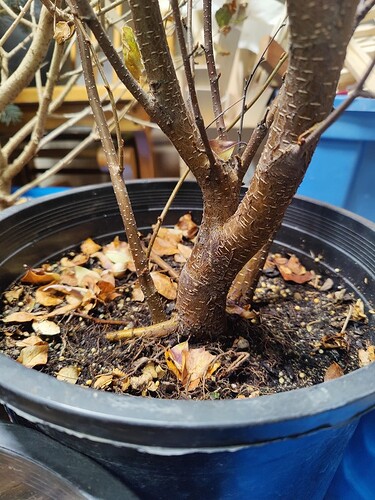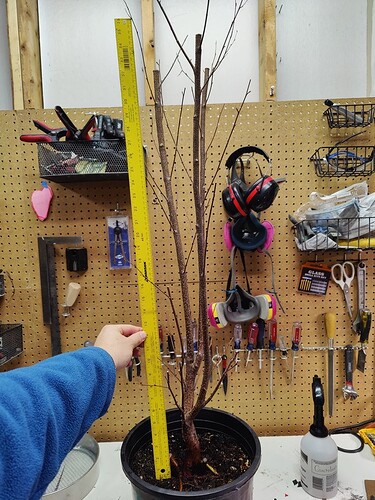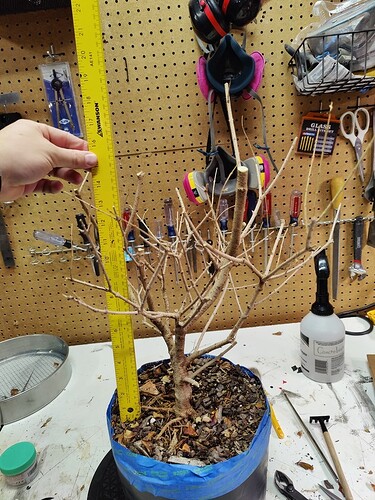I have a nursery purchased “River/Red Birch” Betula Occidentalis that currently sits at around 8 foot tall. It has, to me, a really interesting trunk base and i think it will turn out nice, plus I got it real cheap. It is currently still in its 3.5-gallon nursery container. This spring, I want to generally apply the things i have learned from Ryan regarding nursery stock: that being to repot it first while it is young and full of energy with tons of foliar mass, so that I can attack the roots pretty vigorously. Given that it is going to be a trunk chop, I have elected to plant it in an 8inch cedar-wood square container (3 in deep), to give it perhaps a bit more than a full-on Bonsai pot, to aid with its trunk chop recovery. But what I am trying to wrap my head around is: when actually IS the best time to do this trunk chop? I have poured over Denis Vojtilla’s content, and have a good idea of where i want to make the chop (something like 12-16 inches from root base, paying close attention to latent buds) but no idea when, or even what order to do it in.
The way I see it is I have a few options, which would you choose?:
-
Repot in this mid-March or so into the training flat. Trunk chop in autumn (or next spring even)
-The worry here is that I will have an 8 foot tall tree with loads of foliage, and a tiny base. I live in Denver and it gets hot, i worry about being able to support all that. -
Trunk chop it just as the buds swell this year and leave it in the nursery container till next spring.
- What I would have done had I not heard Ryan make his point about doing root-work first. I do still think in the recovery from the chop that I will have a ton of foliage left, certainly much more than a trained tree to support next year’s repot.
-
Perform the trunk chop near to/ at the same time as the root work/repot.
-Obviously the most stressful of the three options, but as a young vigorous nursery specimen might be able to handle it? At least this matches the foliage to the new root volume. -
I could repot at bud swell, and trunk chop at post-flush-hardening.
-a compromise between #1 and #3… Might be less stressful than #3, but I also “waste” a lot of energy on foliage that I will ultimately remove soon after. I would have to wait until the tree is in energy positive, for sure.
Anyway - thanks in advance. If there is some resource i could read i would love to. I also have a much smaller privet that is in the same boat, but being only 3.5 foot tall, all the issues are a little less. Getting a good system down on how to handle large nursery TREES would really open a door.







